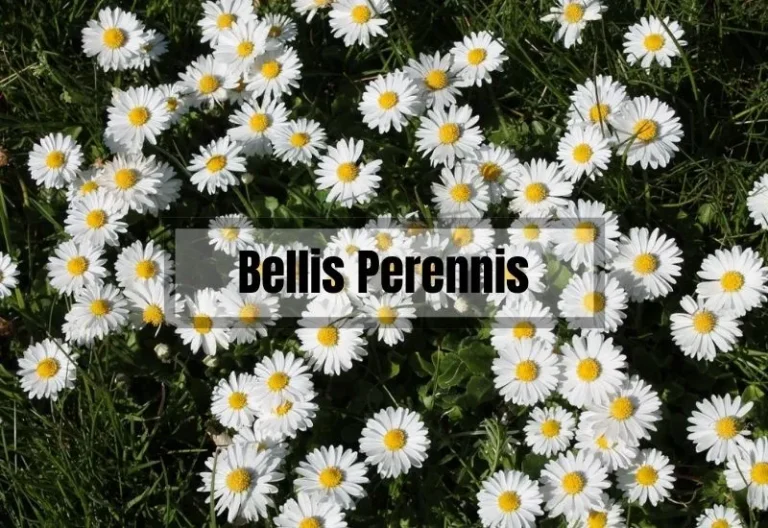How to Deadhead Canna Lilies: Maximize Your Blooms This Summer
Deadheading is a crucial aspect of taking care of your canna lilies. Not only does it help maintain the plant’s appearance, but it also encourages new growth and blossoming. Deadheading involves removing the dead or dying flowers from the plant, which can be done with the help of some basic tools.
To deadhead your canna lilies, you will need a pair of sharp garden shears or scissors. Look for a pair of shears that are designed for cutting stems, as they will be able to make a clean cut and help you avoid damaging the stem. Deadheading should be done during the growing season to keep new blooms coming.
By following a few simple steps, you can easily deadhead your canna lilies and ensure that they continue to flourish throughout the growing season. In this article, we will provide you with a step-by-step guide to deadhead canna lilies, as well as some tips and common mistakes to avoid.

How to Deadhead Canna Lilies
Canna lilies are a beautiful addition to any garden. These vibrant plants produce stunning blooms that can last for weeks. However, once the blooms start to fade, it’s time to deadhead them.
Deadheading is the process of removing spent flowers from a plant to encourage new growth and prolong the blooming period. In this section, we’ll go over how to deadhead canna lilies so that you can keep your plants looking their best.
Step 1: Gather Your Tools
Before you start deadheading your canna lilies, you’ll need to gather a few tools. You’ll need a pair of sharp garden shears or scissors to precisely cut off the spent flowers.
Make sure the blades are clean and sharp before use, as dull blades can tear the stem of the plant. You may also want to wear a pair of gloves to protect your hands from any thorns or prickly stems.
Step 2: Identify Spent Flowers
The first step in deadheading canna lilies is to identify the spent flowers. Look for blooms that are starting to wilt or fade. You want to cut off just the fading flower, leaving the buds in place.
Pretty soon, they should open up into new flowers. If you do happen to remove the buds or even the whole stalk, all is not lost. The plant will quickly grow new stalks and flowers. It will just take a little longer.
Step 3: Cut Off Spent Flowers
Once you’ve identified the spent flowers, it’s time to cut them off. Use your garden shears or scissors to gently snip away the faded bloom below the flower cluster.
Be sure to cut the stem at an angle to prevent water from pooling on the cut surface, which can lead to rot. Repeat this process for any additional canna deadheads.
Step 4: Dispose of Spent Blooms
After you’ve deadheaded your canna lilies, it’s important to dispose of the spent blooms properly. Discard them with your yard waste or compost them if you have a compost pile. Don’t leave them on the ground near your plants, as they can attract pests and diseases.
By deadheading your canna lilies, you’ll not only prolong the blooming period but also give your garden a neat and lush look. With a little bit of effort, you can keep your canna lilies looking their best all season long.
Understanding The Importance of Deadheading
Deadheading is an essential task for maintaining the health and appearance of your canna lilies. Deadheading is the process of removing spent flowers from the plant. This process helps redirect the plant’s energy away from seed production and towards growing new flowers, foliage, and rhizomes.
By deadheading your canna lilies, you are encouraging the plant to produce more flowers, which ultimately leads to a longer blooming season. Deadheading also helps prevent the plant from wasting energy on seed production, which can weaken the plant and reduce the number of flowers it produces.
Different canna lilies have varying seed pod sizes, with some producing large black seed pods while others produce sterile seed pods. Regardless of the type of canna lily you have, deadheading is still critical for maintaining the plant’s health and appearance.
If you want to ensure that your canna lilies look their best all season long, you should make deadheading a regular part of your gardening routine. Deadheading not only helps to keep your plants healthy and blooming but also promotes bigger, better, and more impressive perennials in the long run.
To deadhead your canna lilies, you will need a few tools, including a pair of sharp pruning shears or scissors. You should start by examining the plant and identifying the spent flowers. Cut the stem of the spent flower just above the next set of healthy leaves or buds. Be sure to cut at an angle to prevent water from sitting on the cut surface and causing rot.
By understanding the importance of deadheading, you can help your canna lilies reach their full potential and enjoy a beautiful, long-lasting blooming season.
Tools Needed for Deadheading
When it comes to deadheading canna lilies, you don’t need a lot of tools, but you do need the right ones. Having the right tools will make the process easier and more efficient. Here are the tools you’ll need:
Sharp Garden Shears or Scissors
The first tool you need is a pair of sharp garden shears or scissors. Look for a pair of shears that are designed for cutting stems, as they will be able to make a clean cut and help you avoid damaging the stem.
If you don’t have a pair of garden shears, you can use a pair of sharp scissors instead.
Clean Pruning Shears or Scissors
It’s important to use clean pruning shears or scissors when deadheading canna lilies. Dirty tools can spread diseases and infections, which can harm your plants.
Before you start deadheading, clean your tools with rubbing alcohol or a solution of one part bleach to nine parts water. Rinse the tools with water and let them dry completely before using them.
Garden Gloves
While not strictly necessary, wearing garden gloves can help protect your hands from thorns, prickly leaves, and other hazards in your garden. They can also help you get a better grip on your tools, which can make the process easier and safer.
Container or Bag
Finally, you’ll need a container or bag to collect the dead flowers and other plant material. This will help keep your garden looking tidy and make it easier to dispose of the dead material. You can use a plastic bag, a bucket, or any other container that’s easy to carry and won’t spill.
By having these tools on hand, you’ll be well-equipped to deadhead your canna lilies and keep them looking their best.
Step-by-Step Guide to Deadhead Canna Lilies
Deadheading is an essential part of maintaining the health and beauty of your canna lilies. Here’s a step-by-step guide to help you deadhead your canna lilies effectively:
- Wait for the Right Time: Deadheading should be done when the flowers have started to fade or wilt. This is usually a few weeks after they have bloomed.
- Gather Your Tools: You’ll need a pair of sharp garden shears or scissors and a pair of gloves. Make sure the blades are sharp and clean before use, as dull blades can tear the stem of the plant.
- Identify the Spent Flowers: Look for flowers that have started to wilt or fade. They will be easy to spot as they will have lost their vibrant color and may be drooping.
- Cut the Stem: Using your shears or scissors, cut the stem just above the nearest leaf node or bud. Make sure to cut the stem at a slight angle to prevent water from pooling on the cut.
- Remove Seed Pods: Canna lilies produce seed pods after flowering. If you want to prevent the plant from expending unnecessary energy on seed production, remove the seed pods by cutting them off at the base of the stem.
- Repeat as Necessary: Deadheading is not a one-time task. You’ll need to repeat the process throughout the growing season to keep your canna lilies looking their best.
Deadheading your canna lilies may seem like a small task, but it can make a big difference in the health and beauty of your plants. With this step-by-step guide, you’ll be able to deadhead your canna lilies like a pro.
When is The Best Time to Deadhead Canna Lilies
Deadheading your canna lilies is important to encourage continuous blooming and keep your plants looking their best. But when is the best time to deadhead your canna lilies?
The best time to deadhead canna lilies is when the flowers have faded and the petals have fallen off. It is important to wait until the flowers have completely finished blooming, as cutting them too early can interrupt the reproductive process and prevent the plant from producing additional flowers.
Regular deadheading is recommended to ensure that your canna lilies bloom continuously throughout the growing season. Aim to remove faded flowers at least once a week or whenever you notice them.
When deadheading canna lilies, make sure to cut the flower stalk back to the base of the plant. This will help to keep the plant looking tidy and encourage new growth.
It is also important to deadhead your canna lilies to prevent them from going to seed. If the plant is allowed to go to seed, it will put all of its energy into producing seeds instead of flowers, which can reduce the overall bloom production.
In summary, the best time to deadhead canna lilies is when the flowers have completely finished blooming and the petals have fallen off. Regular deadheading is recommended to encourage continuous blooming throughout the growing season, and remember to cut the flower stalk back to the base of the plant.
What to Do with The Deadheaded Flowers
Once you have deadheaded your canna lilies, you may be wondering what to do with the dead flowers. Here are a few options:
Option 1: Compost Them
Deadheaded flowers make excellent compost material. Simply add them to your compost pile along with other organic material such as leaves, grass clippings, and kitchen scraps. The flowers will break down over time and add valuable nutrients to your soil.
Option 2: Use Them for Crafts
If you’re feeling creative, you can use your deadheaded flowers for various crafts. For example, you can dry the flowers and use them to make potpourri or flower arrangements. You can also press the flowers and use them for scrapbooking or card-making.
Option 3: Dispose of Them
If you don’t have a compost pile and don’t feel like crafting, you can simply dispose of the dead flowers with your regular yard waste. You can also add them to your curbside green waste bin if your city offers that service.
Remember, deadheading your canna lilies not only makes them look better but also encourages new growth and blooms. So don’t be afraid to deadhead your plants and enjoy the benefits of a healthy and vibrant garden.
Tips to Make Deadheading Easier
Deadheading your canna lilies can be a simple and rewarding task. With a little bit of practice, you can easily remove spent blooms and encourage more flowers to bloom. Here are some tips to make deadheading easier:
Use the Right Tools
The first step to making deadheading easier is to use the right tools. You will need a pair of sharp garden shears or scissors.
Look for a pair of shears that are designed for cutting stems, as they will be able to make a clean cut and help you avoid damaging the stem. Make sure the blades are sharp and clean before use, as dull blades can tear the stem of the plant.
Deadhead Regularly
Deadheading regularly is the key to keeping your canna lilies looking their best. As soon as you see a spent bloom, remove it. This will encourage the plant to produce more flowers and prevent it from wasting energy on producing seeds.
Cut at the Right Place
When deadheading your canna lilies, it’s important to cut at the right place. Cut off just the fading flower, leaving the buds in place.
Pretty soon they should open up into new flowers. If you do happen to remove the buds or even the whole stalk, all is not lost. The plant will quickly grow new stalks and flowers. It will just take a little longer.
Remove Seed Pods
If you see any seed pods, harvest those first! This will prevent the plant from wasting energy on producing seeds and encourage it to produce more flowers.
Use pruners or strong scissors to gently snip away the faded bloom below the flower cluster. Repeat for any additional canna deadheads. Discard spent blooms with your yard waste.
Wear Gloves
Wearing gloves while deadheading canna lilies is a good idea. This will prevent your hands from getting dirty and help you avoid any thorns or prickly stems. It’s also a good idea to wear long sleeves and pants to protect your skin.
By following these tips, you can make deadheading your canna lilies a breeze. With a little bit of practice, you’ll be able to keep your plants looking their best and encourage more flowers to bloom.
Common Mistakes to Avoid While Deadheading
Deadheading canna lilies is a simple task, but there are a few mistakes that many gardeners make. Here are some common mistakes to avoid while deadheading:
Mistake 1: Waiting Too Long to Deadhead
If you wait too long to deadhead your canna lilies, the plant will start producing seeds. This is not ideal because it will divert energy from producing new blooms. Deadheading should be done as soon as the flowers start to fade, and before seeds start to form.
Mistake 2: Cutting Too Low
When deadheading your canna lilies, it is important to cut the flower stalk just above the next leaf node. Cutting too low can damage the plant and reduce the number of blooms it produces.
Mistake 3: Removing Too Many Leaves
While deadheading, make sure to only remove the flower stalk and not any leaves. Leaves are important for photosynthesis and provide energy for the plant. Removing too many leaves can weaken the plant and reduce its ability to produce new blooms.
Mistake 4: Not Disinfecting Your Tools
It is important to disinfect your tools before and after deadheading to prevent the spread of disease. Use a solution of one part bleach to nine parts water to disinfect your tools.
Mistake 5: Deadheading Too Often
Deadheading too often can actually reduce the number of blooms your canna lilies produce. This is because the plant needs time to recover and build up energy before producing new blooms. Deadhead your canna lilies once the flowers start to fade, but avoid doing it too often.
By avoiding these common mistakes, you can ensure that your canna lilies produce beautiful blooms all summer long.
Benefits of Deadheading Canna Lilies
Deadheading canna lilies is a simple and effective way to promote healthy growth and prolong their blooming period. Here are some of the benefits of deadheading canna lilies:
- Encourages more blooms: Deadheading canna lilies redirects the plant’s energy towards producing more blooms instead of producing seeds. This means you’ll get more beautiful flowers to enjoy throughout the growing season.
- Improves plant appearance: Removing spent flowers keeps your canna lilies looking neat and tidy. Deadheading also prevents the plant from wasting energy on producing unsightly seed heads.
- Promotes healthy growth: When you deadhead canna lilies, you remove the spent flowers and any damaged or diseased foliage. This helps to prevent the spread of disease and pests, which can harm the plant and reduce its overall health.
- Increases rhizome growth: Deadheading canna lilies encourages the plant to focus its energy on growing healthy rhizomes, which are the underground stems that store nutrients and water. Healthy rhizomes lead to bigger and better plants in the long run.
- Attracts pollinators: Canna lilies are pollinated by bees and other insects. By deadheading spent flowers, you encourage the plant to produce more nectar-rich blooms, which will attract more pollinators to your garden.
Caring for Canna Lilies After Deadheading
Once you have deadheaded your canna lilies, it’s important to care for them properly to ensure their optimal growth. Here are some tips to help you care for your canna lilies after deadheading:
Watering
Water your canna lilies regularly, especially during hot, dry weather. Be sure not to overwater them, as this can lead to root rot. A good rule of thumb is to water deeply once a week, rather than lightly every day.
Fertilizing
Fertilize your canna lilies with a balanced fertilizer every four to six weeks during the growing season. This will help promote healthy growth and blooming.
Pruning
Prune your canna lilies as needed to remove any dead or diseased foliage. This will help prevent the spread of disease and promote healthy growth.
Mulching
Mulching around your canna lilies can help retain moisture in the soil and prevent weeds from growing. Use a layer of organic mulch, such as shredded leaves or bark, and apply it to a depth of 2-3 inches.
Winter Care
If you live in a climate where canna lilies are not winter hardy, you will need to dig up the rhizomes in the fall and store them indoors for the winter. To do this, wait until the foliage has died back, then carefully dig up the rhizomes and remove any excess soil. Allow them to dry for a few days, then store them in a cool, dry place until spring.
By following these simple tips, you can help ensure that your canna lilies continue to thrive and bloom year after year.
Frequently Asked Questions (FAQs)
Is deadheading canna lilies necessary?
While not absolutely necessary, deadheading can help encourage more blooms and maintain a tidy appearance. However, canna lilies are prolific bloomers, so you’ll still enjoy plenty of flowers even if you choose not to deadhead.
Can I deadhead canna lilies too often?
It’s important to only deadhead when the flowers are truly spent to avoid cutting short their blooming period. Keep an eye on your plants and get to know their blooming patterns to determine the optimal time for deadheading.
How do I know when to stop deadheading my canna lilies for the season?
As the weather cools and the growing season comes to an end, you’ll notice fewer blooms and the plant’s energy shifting towards preparing for winter. At this point, it’s time to stop deadheading and focus on overwintering your plants.
What tools should I use for deadheading canna lilies?
A pair of clean, sharp pruning shears or scissors will do the trick. Just make sure they’re clean to prevent the spread of diseases.
Will deadheading canna lilies encourage more blooms?
Yes, deadheading helps redirect the plant’s energy towards producing more flowers instead of focusing on seed production. This can lead to more blooms throughout the growing season.
Conclusion
Well, there you have it, folks! Deadheading canna lilies can be a great way to maximize their blooming potential and keep your garden looking fabulous all summer long. Remember to combine deadheading with proper watering, fertilizing, and pest control to give your canna lilies the best chance to thrive.
At the end of the day, it’s important to find the method that works best for you and your plants. So, go forth and experiment, and most importantly, have fun with your gardening adventures!






